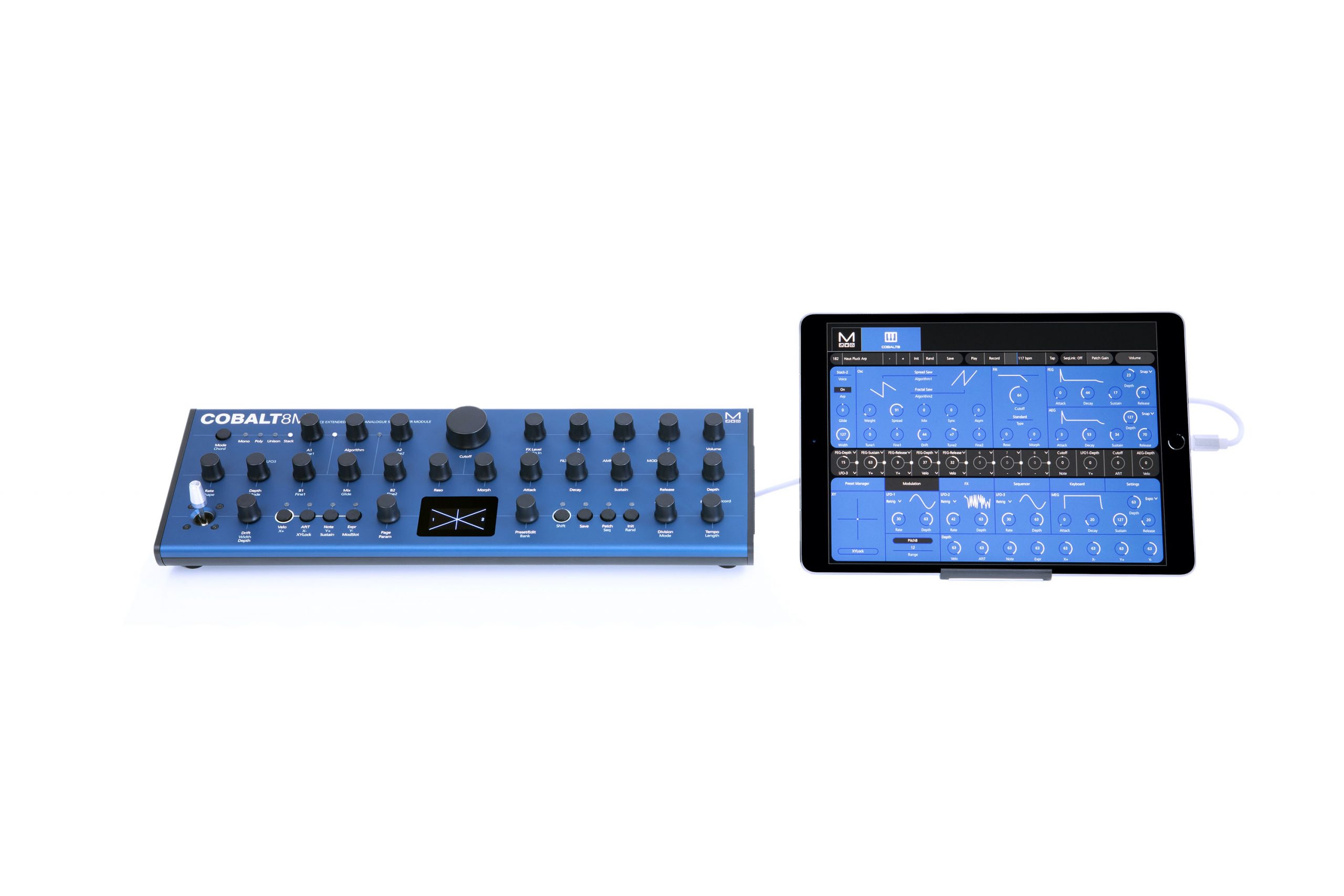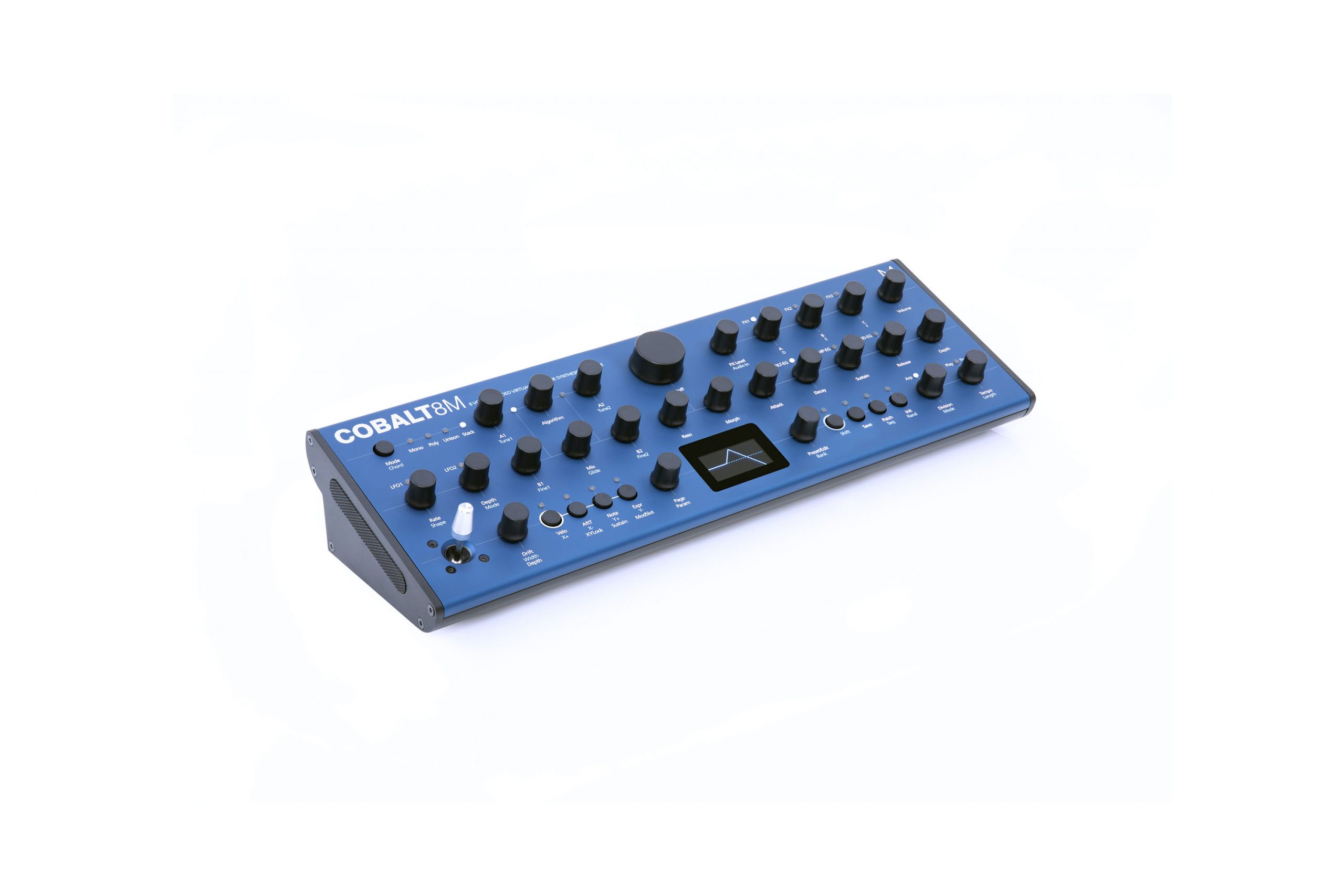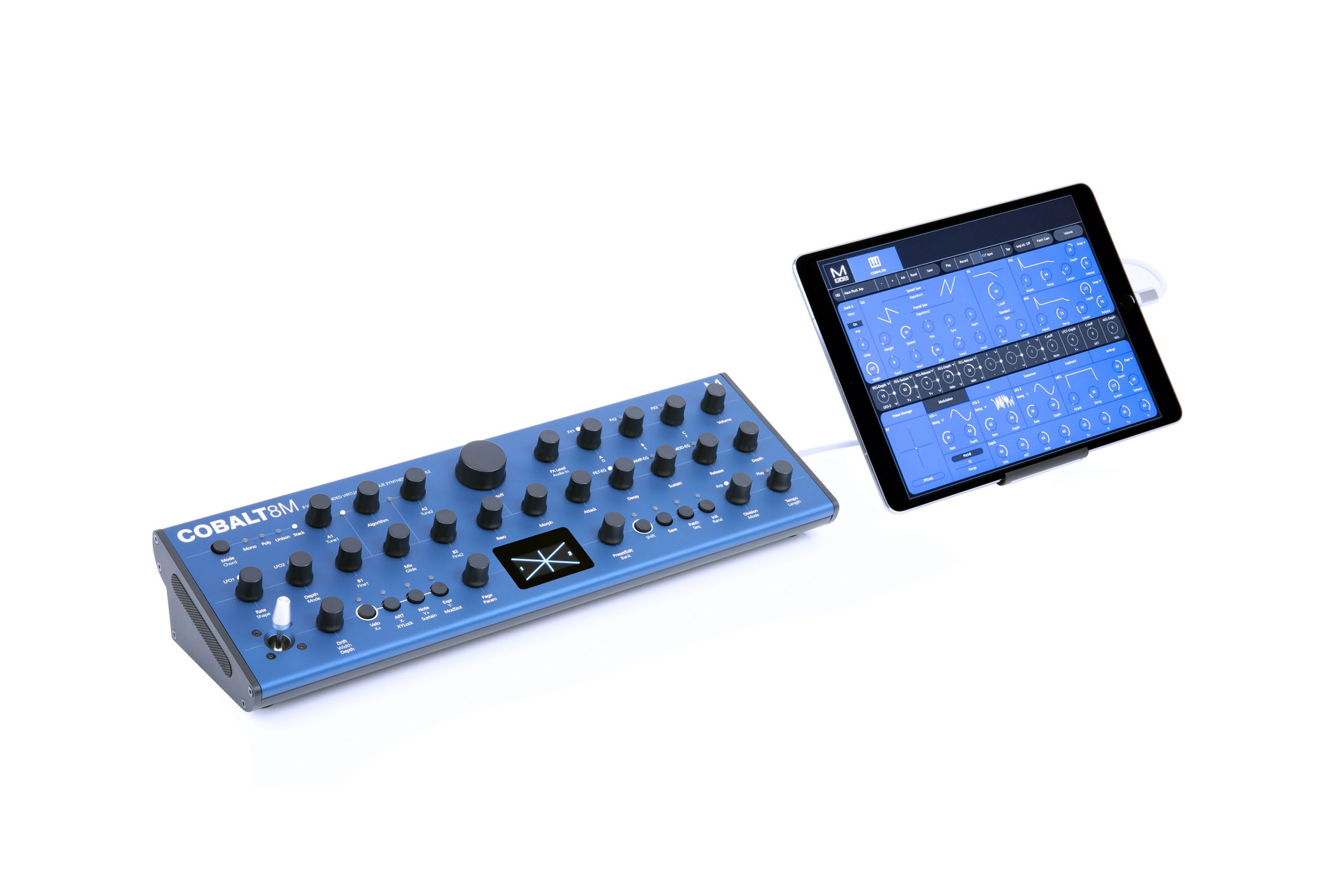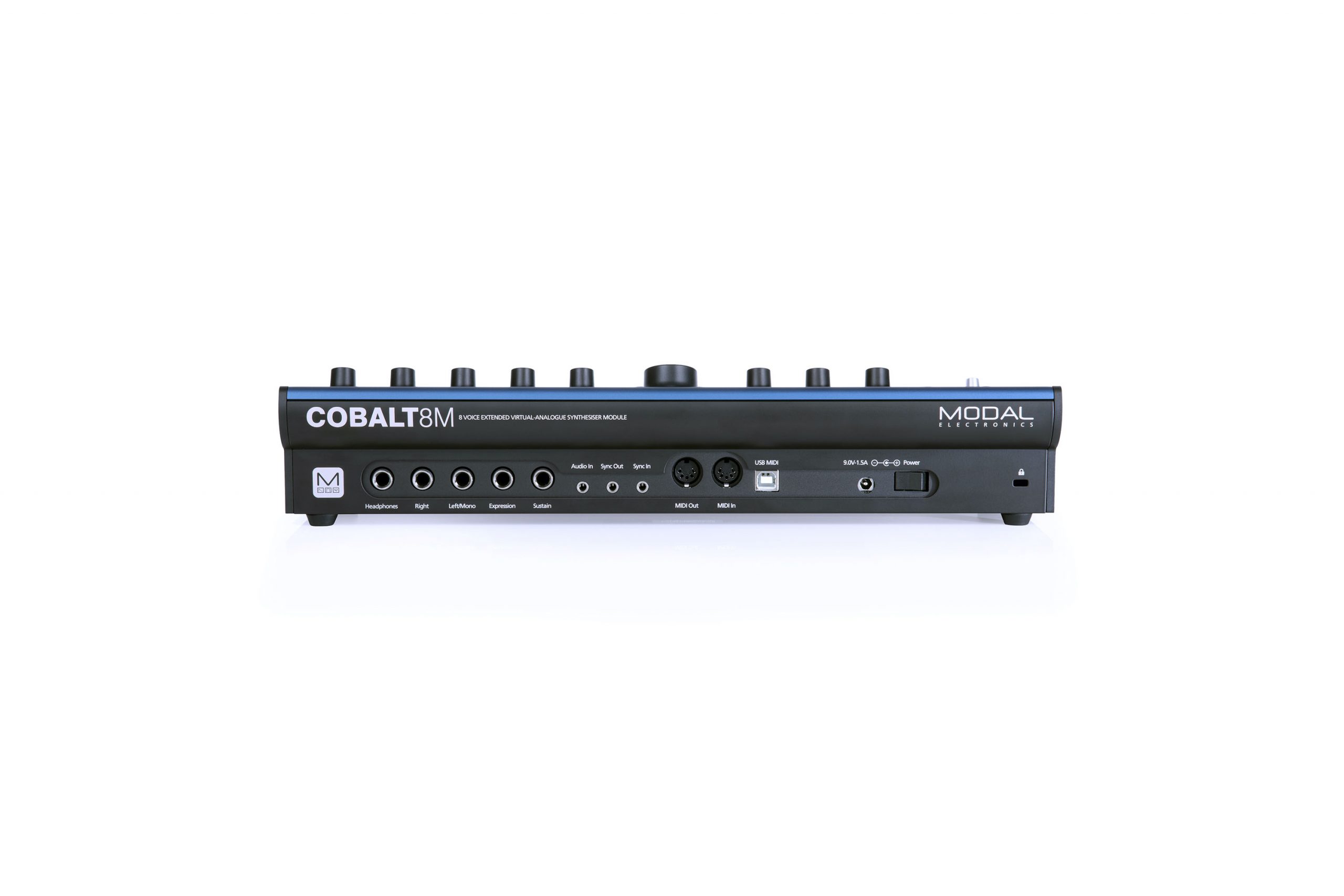Please sign in so that we can notify you about a reply
Desktop Format COBALT8M by Modal Electronics | 8 Voice Extended Virtual-Analogue Synthesiser in a Smaller Package
Building on the tradition of warm and punchy analogue-style synth sounds, the COBALT8 Series synths unlock the full creative potential of analogue waveforms. This powerful, inspiring instrument reinvents the aesthetics of analogue sounds and gives musicians, producers and sound designers the power to experiment and explore a new era of virtual-analogue synthesiser textures, far beyond the limits of the analogue predecessors.
The COBALT8M has all the power of its bigger brothers (COBALT8 and COBALT8X) but comes in the convenient desktop/rack-mountable format to fit into your existing synth rig.
The new Modal Electronics COBALT8M is an extremely high-quality, 8-voice virtual analogue synth which is made for musicians who are truly serious about sound. With the COBALT8, the team at Modal Electronics have taken the sonic properties of the classic synths and engineered them into a truly modern instrument capable of much more than analogue synths. With a new oscillator engine, extensive modulation options, an arpeggiator, morphable 4-pole ladder filter, step sequencer and more, there's plenty to experiment with.
Eight true polyphonic voices allow players to lay out wide string or rich synth pad chords, while a monophonic bass or lead patch, played with 64 oscillators can shake the walls of every every clubs, studio or stadium. The COBAL8M is like a Swiss army knife of sound perfect for producers and sound designers alike.
Modal Electronics Cobalt8M Product Specification
Polyphony
True 8 voice polyphonic
MPE
Supports MPE-compatible MIDI controllers, allowing you to apply polyphonic control and expression to individual notes
Oscillators
64 high-resolution virtual-analogue oscillators, up to 8 per voice
Two independent and self-contained oscillator groups with sine, pulse, triangle, sawtooth waveforms, 40 different algorithms including: complex analogue synthesis techniques, built-in crossmodulation (SYNC, RM, and many more), PWM, smooth morphing between VA waves, bit crushing, filtered noise.
Algorithms
VA Sweep: Sweep through sine, triangle, saw, square, pulse (with pulse width) (A), ability to detune the oscillators (or snap to musical intervals) using spread (B)
VA Crushed: Sweep through sine, triangle and saw shapes (A) with real-time control over bit crushing (B)
Spread Saw: Spread mode with increased oscillator count, ability to blend between the fundamental and detuned oscillators (A) and more comprehensive spread (B) options (e.g oct up + detuned)
Spread Square: Spread mode with increased oscillator count, ability to blend between the fundamental and detuned oscillators (A) and more comprehensive spread (B) options (e.g oct up + detuned)
Spread Triangle: Spread mode with increased oscillator count, ability to blend between the fundamental and detuned oscillators (A) and more comprehensive spread (B)options (e.g oct up + detuned)
PWM: Classic Pulse Width Modulation with width control (A) and ability to detune the oscillators using spread (B)
PWM Dual: PWM mode where as the width control (A) changes, the pulse width increases in the first cycle of the wave and decreases in the second cycle. Oscillators can be detuned using the spread (B) control
PWM Triangle / Square: Alternating triangle and square waves with control over the width of the triangle portion (A) and an asymmetry control (B) that allows every second cycle to have a different triangle width (inverse) to the first
PWM Saw Eraser: Wave with both a saw and PWM portion, with control over the ratio between the two portions (A) and the width of the PWM portion (B) relative to parameter A
PWM Triangle Pinch: Triangle wave with pulse width modulation (A) and an asymmetry control (B) which allows every second cycle of the wave to have a different width to the first (can be wider or narrower)
Hard Sync Saw: Classic hard sync with un-quantised ratio (A) that can be blended with a sub oscillator (B) one octave below the fundamental
Hard Sync Square: Classic hard sync with un-quantised ratio (A) that can be blended with a sub oscillator (B) one octave below the fundamental
Hard Sync Triangle: Classic hard sync with un-quantised ratio (A) that can be blended with a sub oscillator (B) one octave below the fundamental
Fractal Saw: Complex sync with un-quantised control over ratio (A) and and an asymmetry control (B) that allows every second cycle of the wave to have a different sync ratio to the first
Fractal Square: Complex sync with un-quantised control over ratio (A) and and an asymmetry control (B) that allows every second cycle of the wave to have a different sync ratio to the first
Fractal Triangle: Complex sync with un-quantised control over ratio (A) and and an asymmetry control (B) that allows every second cycle of the wave to have a different sync ratio to the first
Reverse Saw: Periodically reverses the direction of the waveform and changes the playback rate (A), asymmetry control (B) changes the period length (I.e the switch point within a cycle)
Reverse Square: Periodically reverses the direction of the waveform and changes the playback rate (A), asymmetry control (B) changes the period length (I.e the switch point within a cycle)
Reverse Triangle: Periodically reverses the direction of the waveform and changes the playback rate (A), asymmetry control (B) changes the period length (I.e the switch point within a cycle)
Window Amp Sync: Applies amplitude modulation to a sine wave using a hard synced waveform. Features an un-quantised sync ratio control (A) and the ability to morph between multiple window shapes (B)
Metal Saw: Creates ring modulation/amplitude modulation like effects by syncing a waveform to two separate signals, one at the base rate and one at the sync rate. Features un-quantised control over sync rate (A) and ability to balance between the base wave and the modulated signal (B)
Metal Square: Creates ring modulation/amplitude modulation like effects by syncing a waveform to two separate signals, one at the base rate and one at the sync rate. Features un-quantised control over sync rate (A) and ability to balance between the base wave and the modulated signal (B)
Metal Triangle: Creates ring modulation/amplitude modulation like effects by syncing a waveform to two separate signals, one at the base rate and one at the sync rate. Features un-quantised control over sync rate (A) and ability to balance between the base wave and the modulated signal (B)
Ring Mod Saw: Ring mod applied to two saw waves, with quantised ratio control (A) that snaps through a series of useful ratios, and a fine control (B), which cross-fades between these ratios allowing precise control across the whole range
Ring Mod Square: Ring mod applied to two square waves, with quantised ratio control (A) that snaps through a series of useful ratios, and a fine control (B), which cross-fades between these ratios allowing precise control across the whole range
Ring Mod Triangle: Ring mod applied to two triangle waves, with quantised ratio control (A) that snaps through a series of useful ratios, and a fine control (B), which cross-fades between these ratios allowing precise control across the whole range
Ring Mod Triangle / Square: Ring mod applied to a triangle and a square wave, with quantised ratio control (A) that snaps through a series of useful ratios, and a fine control (B), which cross-fades between these ratios allowing precise control across the whole range
Ring Mod Saw / Square: Ring mod applied to a saw and square wave, with quantised ratio control (A) that snaps through a series of useful ratios, and a fine control (B), which cross-fades between these ratios allowing precise control across the whole range
Ring Mod Saw / Triangle: Ring mod applied to a saw and triangle wave, with quantised ratio control (A) that snaps through a series of useful ratios, and a fine control (B), which cross-fades between these ratios allowing precise control across the whole range
Chaos Saw: Un-quantised ring modulation (A) combined with randomisation (B)
Chaos Square: Un-quantised ring modulation (A) combined with randomisation (B)
Chaos Triangle: Un-quantised ring modulation (A) combined with randomisation (B)
Fold Triangle: Triangle wave-folding (A) with DC offset (B)
Filtered Noise: Noise generator combined with a morphable filter with full control over Cutoff (A) and Morph (B)
NEW – FM Saw:Square: Frequency Modulation using a Sawtooth as the carrier and a Square as the modulator with full control over FM Depth (A) and Modulator Frequency Ratio (B)
NEW – FM Square:Square: Frequency Modulation using a Square as both the carrier and modulator with full control over FM Depth (A) and Modulator Frequency Ratio (B)
NEW – FM Tri:Square: Frequency Modulation using a Triangle as the carrier and a Square as the modulator with full control over FM Depth (A) and Modulator Frequency Ratio (B)
NEW – Noise AM Saw: Sawtooth Wave amplitude modulated by a filtered noise source with full control over AM Depth (A) and Noise filter cutoff (B)
NEW – Noise AM Square: Square Wave amplitude modulated by a filtered noise source with full control over AM Depth (A) and Noise filter cutoff (B)
NEW – Noise AM Tri: Triangle Wave amplitude modulated by a filtered noise source with full control over AM Depth (A) and Noise filter cutoff (B)
Filter
4-Pole Morphable Ladder Filter with Resonance and four switchable configurations
Resonance and Balanced Filter Modes
Modulation
Three dedicated envelope generators for AMP, MOD and FILTER that can be accessed independently or all three simultaneously including negative (reverse) versions for MOD and FILTER ENVs
Three audio-rate LFO’s with tempo sync (two poly, one global) with seven different shapes
Eight assignable modulation slots and four additional fixed modulation routings for common assignments with 12 modulation sources and 55 modulation destinations
Sequencer and Arpeggiator
Polyphonic Real-time sequencer with 512 notes and four recordable/editable parameter animations (Delay FX, LFO’s, sequencer and arpeggiator can be either clocked internally or externally)
Polyphonic Step Sequencer with 64 steps, 8 notes per step, 4 lanes of Parameter-Lock style animation, Step Input mode, multiple playback modes including gate modes and rest function
Built-In sophisticated programmable arpeggiator of 32 steps with rest capability with up to 2048 steps before repeating
FX
Three incredibly powerful independent and user-configurable stereo FX engines for Chorus, Phaser, Flanger (Pos), Flanger (Neg), Tremolo, LoFi, Rotary, Stereo Delay, Ping-Pong Delay, X-Over Delay and Reverb that can be arranged in any order
User Memory
500 patch memories, all fully editable and ships with 300 factory programs
100 sequencer presets that can be linked to any patch for quickly loading arrangements
100 FX presets
8 Quick Recall slots accessible from the panel for quickly loading your favourite patches
Controls and Performance
Premium FATAR 37-key Keyboard with velocity and channel aftertouch
29 endless encoders, 24 buttons
4-axis joystick that can be assigned to a huge range of modulation destinations and virtually ‘locked’ when desired
Multiple keyboard modes, Mono, Poly, Unison 2, unison 4, unison 8, Stack 2 and Stack 4
Glide/Portamento with both legato and staccato modes
Chord Invert control to easily create chord inversions and variations
Inputs and Outputs
6.35 mm / 1/4″ TS dual-mono line outputs
6.35 mm / 1/4″ TRS headphone output
3.5 mm / 1/8″ TRS stereo audio input
MIDI DIN In and Out
3.5 mm / 1/8″ TS Analogue clock sync In and Out
Class compliant MIDI over USB connection
6.35 mm / 1/4″ TRS expression pedal input
6.35 mm / 1/4″ TS sustain pedal input
Enclosure and Display
Road-ready steel and aluminium enclosure with economical stained bamboo end cheeks
1.54-inch large OLED display for instant visual feedback at all times of playing/editing
Power
Power: DC-9.0V – 1.5A centre-positive
No posts found














